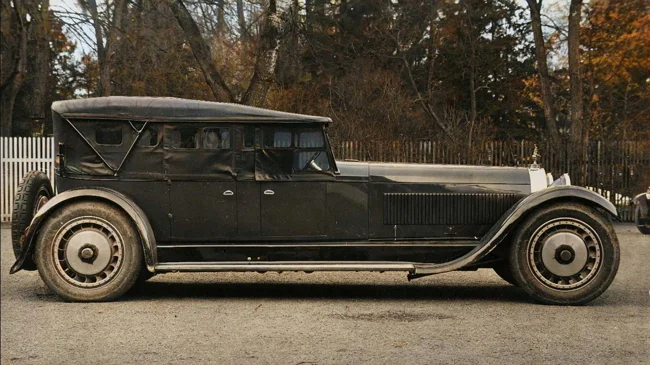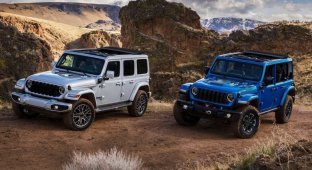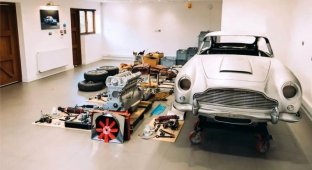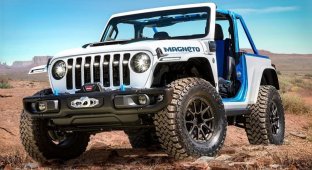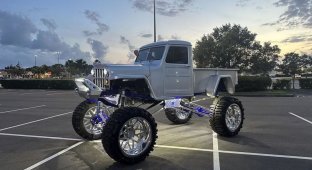Interesting and sometimes funny pictures on the automotive theme (21 photos)
Here you will find the most unusual vehicles, as well as simply curious automobile photos. 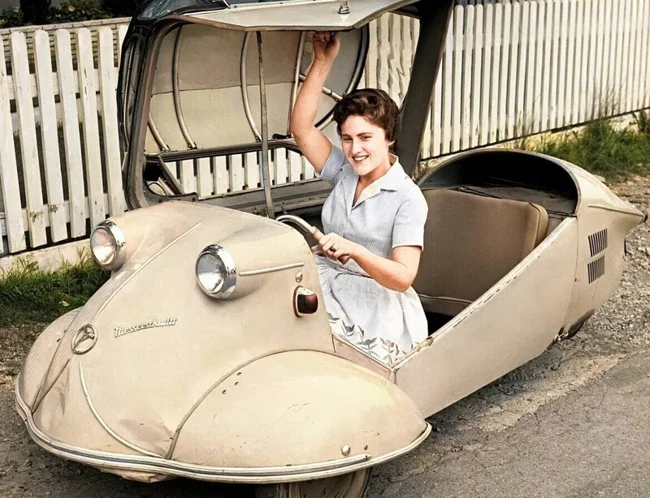
GAZ-VM (NATI-VM) is an experimental Soviet semi-tracked vehicle with increased cross-country ability with a removable tracked drive. Developed in 1937 by NATI, based on the serial GAZ-M-1 vehicle. It did not enter serial production, only two copies of this vehicle were manufactured. 
Willis Jeep FC-170, 1960s. Jeep Forward Control is a line of American light-duty passenger-and-freight vehicles with increased cross-country ability, produced by Willys Motors (later renamed Kaiser Jeep) from 1956 to 1965. These vehicles were also assembled under license outside the United States. The design of the vehicle was distinguished by the placement of the cabin in the "cab-over-engine" style (forward control). 
Electric car based on ZAZ-968. Moscow, 1973. In 1973, an electric car based on ZAZ-968, known as "eared", was created at the Department of Electrical Machines of the Zaporozhye Machine-Building Institute. The new car was called "ZMI - Electro". A special feature of this electric car was a pulse semiconductor converter - an innovative solution for battery electric transport of that time. Thanks to this device, it was possible to significantly improve the characteristics of the car compared to cars equipped with step regulators. The developed system provided a smooth change in the operating modes of the electric motor, minimized energy losses on the resistances and allowed for automatic regenerative braking with recharging of the batteries. The ZMI-electro model was equipped with an electric motor of the DK-908 type with a power of 4 kW at 1000 rpm and a voltage of 30 V. The car was equipped with a battery weighing about 400 kg, on which the prototype could travel as much as 100 km without recharging, which is still not the worst indicator. The maximum speed of the electric car was 60 km/ h. 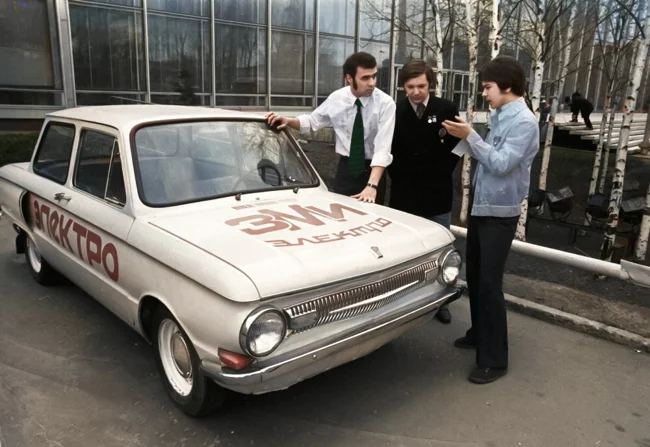
Humber 8hp car, early twentieth century. Model with a capacity of 8 hp. was Humber's attempt to create a low-cost car, and lacked many of the more luxurious features of other Edwardian cars. 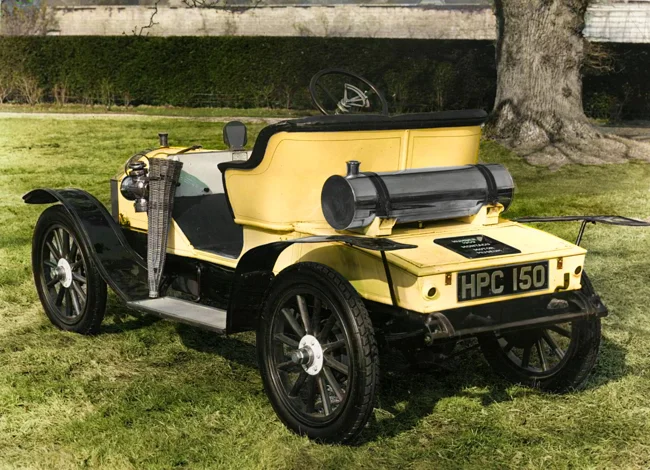
Testing the ZIL-130 for off-road capability. Moscow region, Myachkovo circuit, 1968. The ZIL-130 is a legendary Soviet truck that has become a symbol of the domestic auto industry. It was produced at the Likhachev Moscow Automobile Plant (ZIL) from 1964 to 1994 and proved itself as a reliable and versatile vehicle for a variety of applications. The development of the ZIL-130 began in the late 1950s as an attempt to modernize the outdated ZIL-164. The main task was to create a modern truck that could compete with foreign analogues and meet the requirements of that time. In 1962, the prototype was presented, and in 1964, its serial production began. 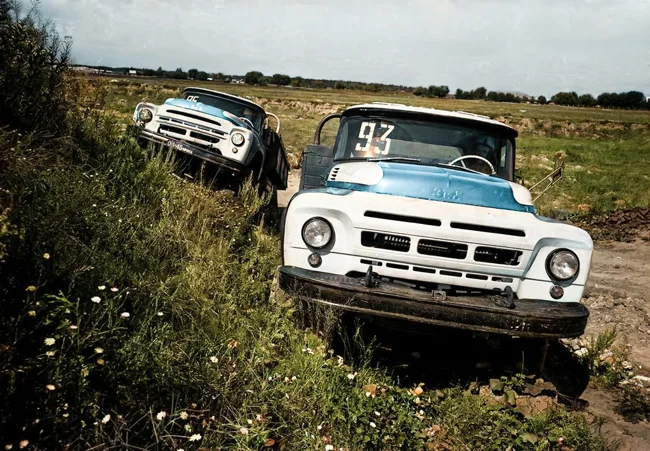
Photographer: Valentin Khukhlaev
Motorcycle racing with a sidecar, 1953. 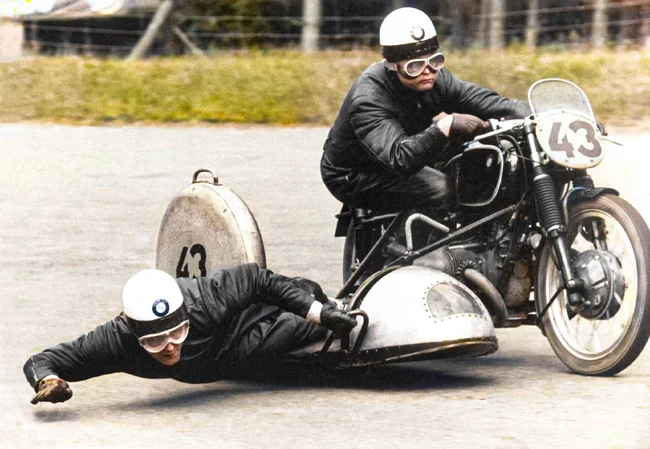
Raleigh Safety Seven is a three-wheeled car developed by the British company Raleigh Cycle Co, 1930s. The British company Raleigh, known for producing bicycles, did not seek to radically change the direction of its activities for a long time. However, by the 1930s, the situation in the country had changed: bicycles were in stable demand, but their sales had reached their peak. At the same time, the automobile market was experiencing a decline, largely due to high taxes on vehicles. The company's strategists thought about this problem and came to the conclusion: it was necessary to invest the money earned on bicycles in the development of a car that could bypass tax restrictions. This is how the Raleigh Safety Seven was created - an unusual vehicle that looked more like a fancy tarantass than a full-fledged car. At the same time, it was formally classified as a three-wheeled motorcycle, which allowed it to significantly reduce the tax burden. This clever move was successful: despite its rather strange design, the car gained popularity among the population due to its low cost. 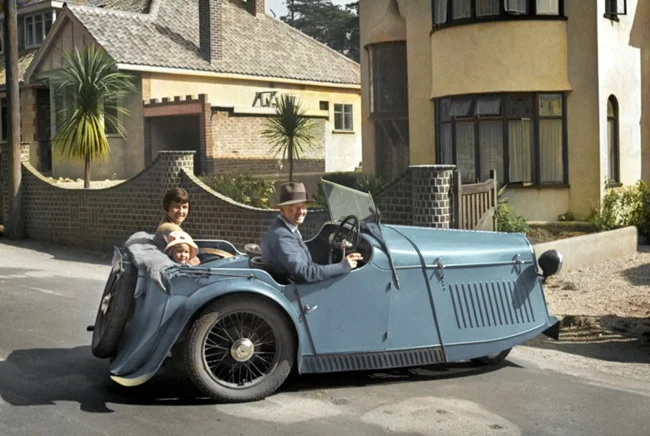
July 1957, suburb of Chicago, Illinois. This space car is a Chrysler Imperial Gen-8. As Christopher Moore noted, the cars of that time, with their fins and other bullets on the bumpers, were deadly for pedestrians, even if they were just parked. 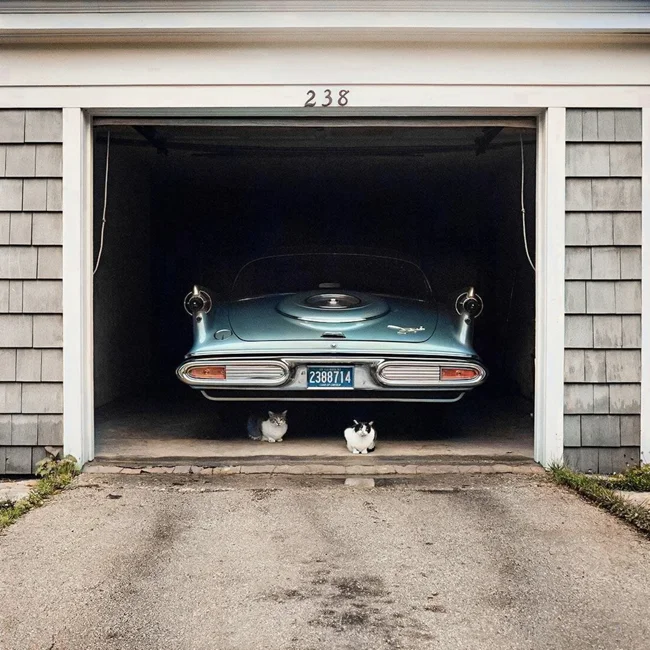
Photographer: Vivian Maier
A motorhome on a UAZ-3303-01 chassis, 1986. The "loaf" is popular in the Netherlands. This car has become an icon among camping enthusiasts in the country. Despite its age, this Soviet car attracts the Dutch with its practicality, cross-country ability and unique character. 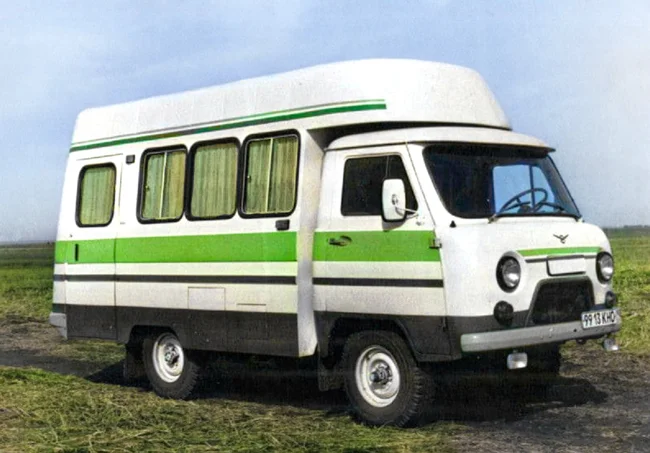
Wolseley 50Hp Landaulette, 1910s. 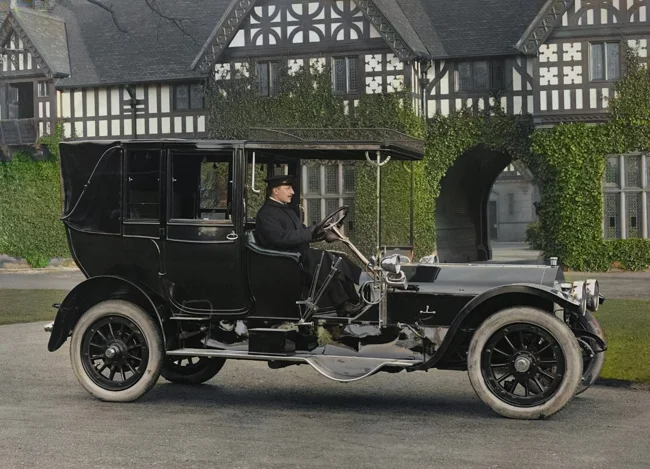
A taxi driver waiting for orders. Istanbul, 1981. DeSoto is a brand of cars developed by Chrysler Corporation and produced in the United States from 1928 to 1961. 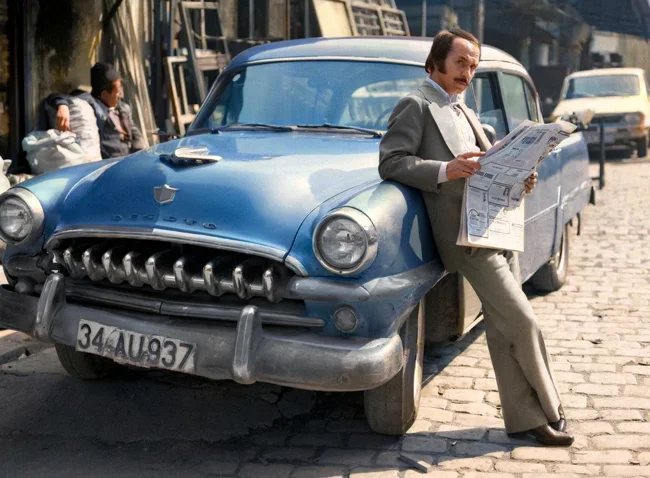
Young women in a car, 1910s. 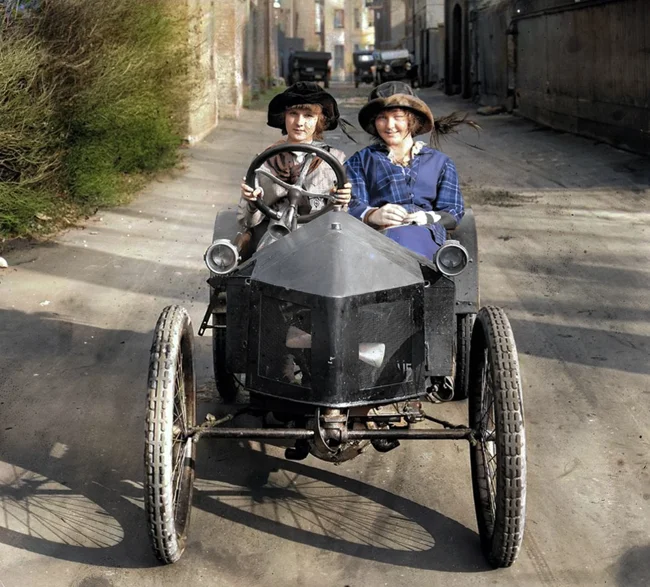
A traffic accident. The Netherlands, 1914. The first recorded accident occurred in France in 1771. Inventor Nicolas Joseph Cugnot, who created a steam carriage, caused something similar to a modern traffic accident. His car, designed to carry artillery pieces, went out of control and crashed into a stone wall. No one was seriously injured, but the incident is considered the first accident in history involving a motor vehicle. The first officially documented collision involving a gasoline-powered car occurred in a suburb of London. A Daimler, driven by a driver named Arthur Edsell, crashed into a cow that had suddenly walked into the road. The cow received minor injuries, and the car was damaged. 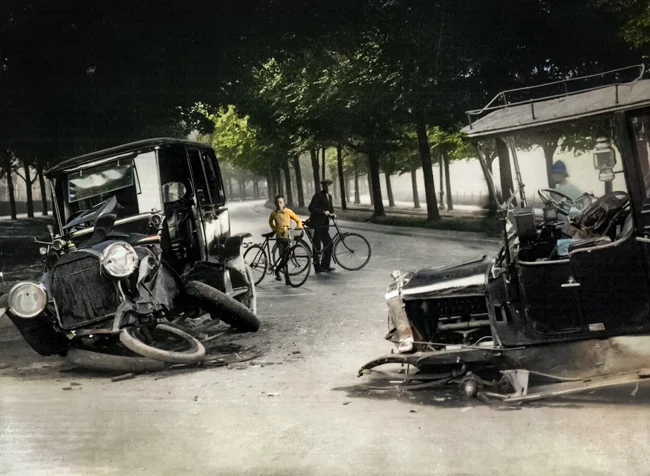
Racing driver Louis Chiron at the 24 Hours of Le Mans. France, 1930. This is a Bugatti Type 43 Grand Sport, 8 cylinders, 2.3 liters. 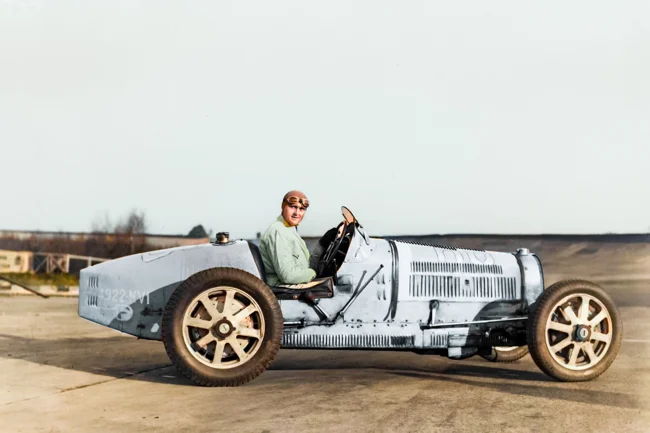
Experimental GAZ-21, 1930s. GAZ-21 is a Soviet experimental all-terrain vehicle. It was not mass-produced, although about a hundred cars were made. It has no relation to the much later Volga GAZ-21. 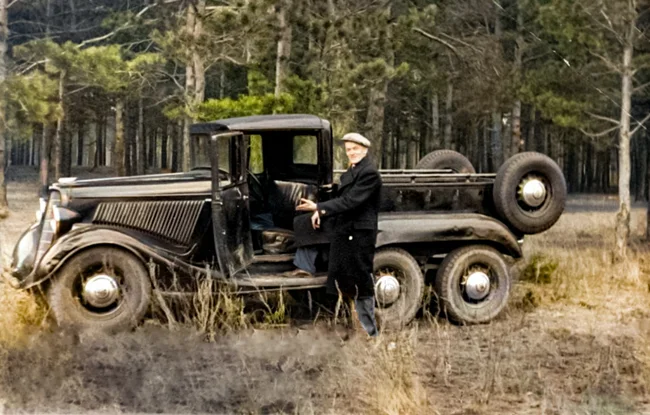
This photo shows the happy owner of a 1955 Messerschmitt KR175 The Messerschmitt KR175 was the first vehicle produced by Messerschmitt after the 1952 agreement with engineer Fritz Fend. According to the concept, this uniquely designed vehicle was an improved version of the Fend Flitzer wheelchair. Only 15,000 Messerschmitt KR175s were produced until the model was replaced by the more modern Messerschmitt KR200 in 1956. 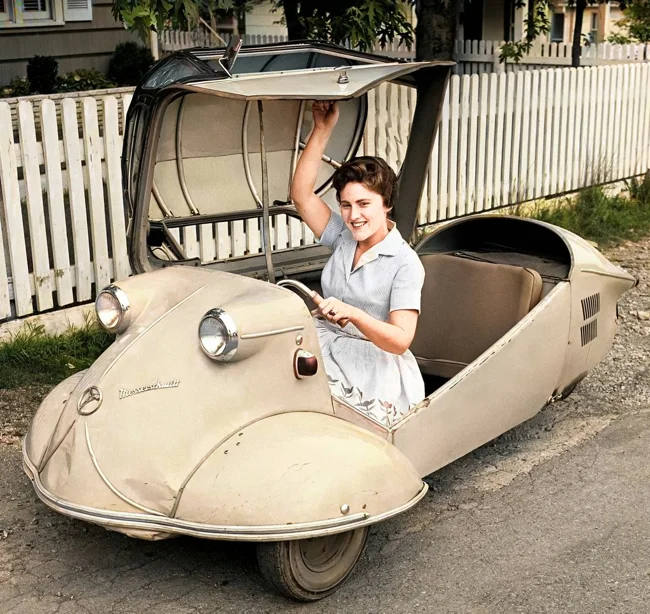
Charging an electric car in the yard, 1905. In the late 19th and early 20th centuries, electric cars competed with steam and gasoline cars. They were in demand, especially among women, due to their ease of operation (no manual starter) and comfort (no noise or smell). By 1900, about a third of all cars in the United States were electric. However, electric cars gradually began to lose popularity due to limited range and the high cost of batteries. Gasoline cars, thanks to improvements (for example, the invention of the electric starter), became more convenient and affordable. 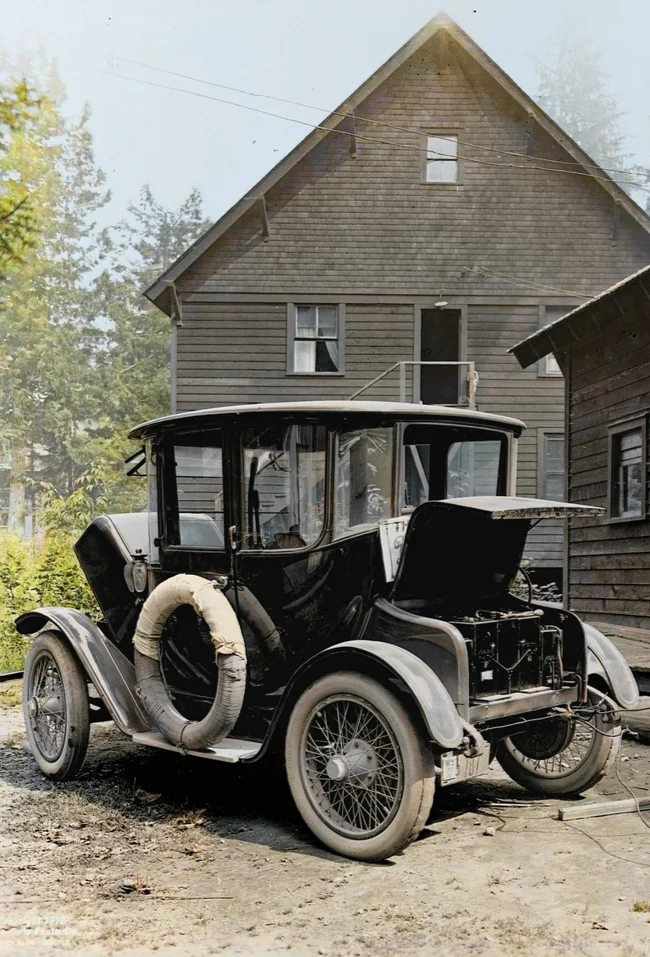
Four men test drive the new Davis Motor Car Company three-wheeler on the streets of Los Angeles in 1947. 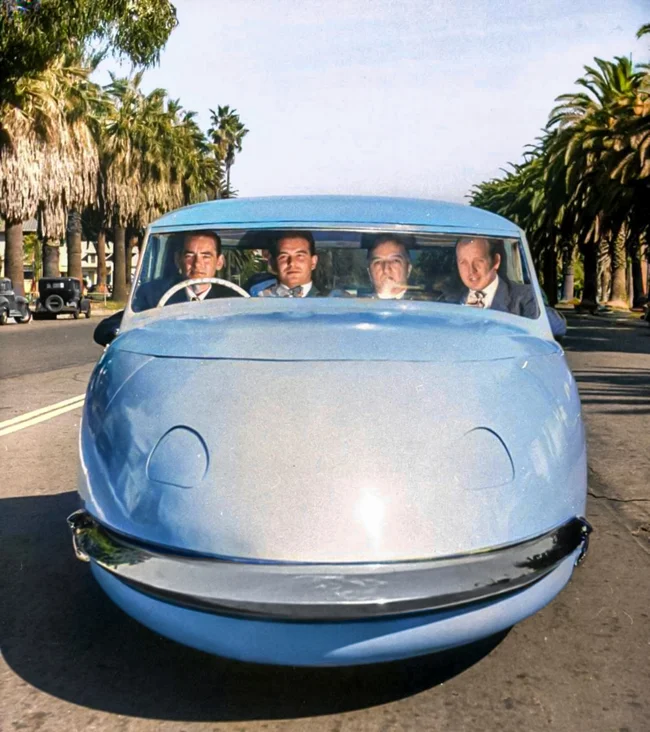
A beautiful lady and a 1953 Studebaker Starliner. 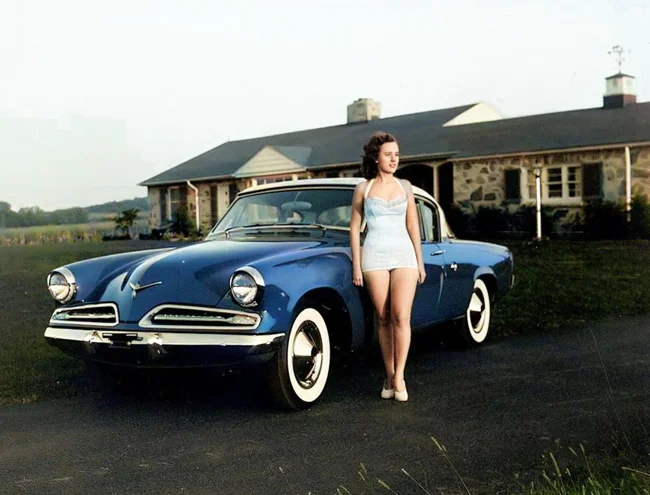
Bugatti Type 41 Royale with bodywork by Packard. 1927 